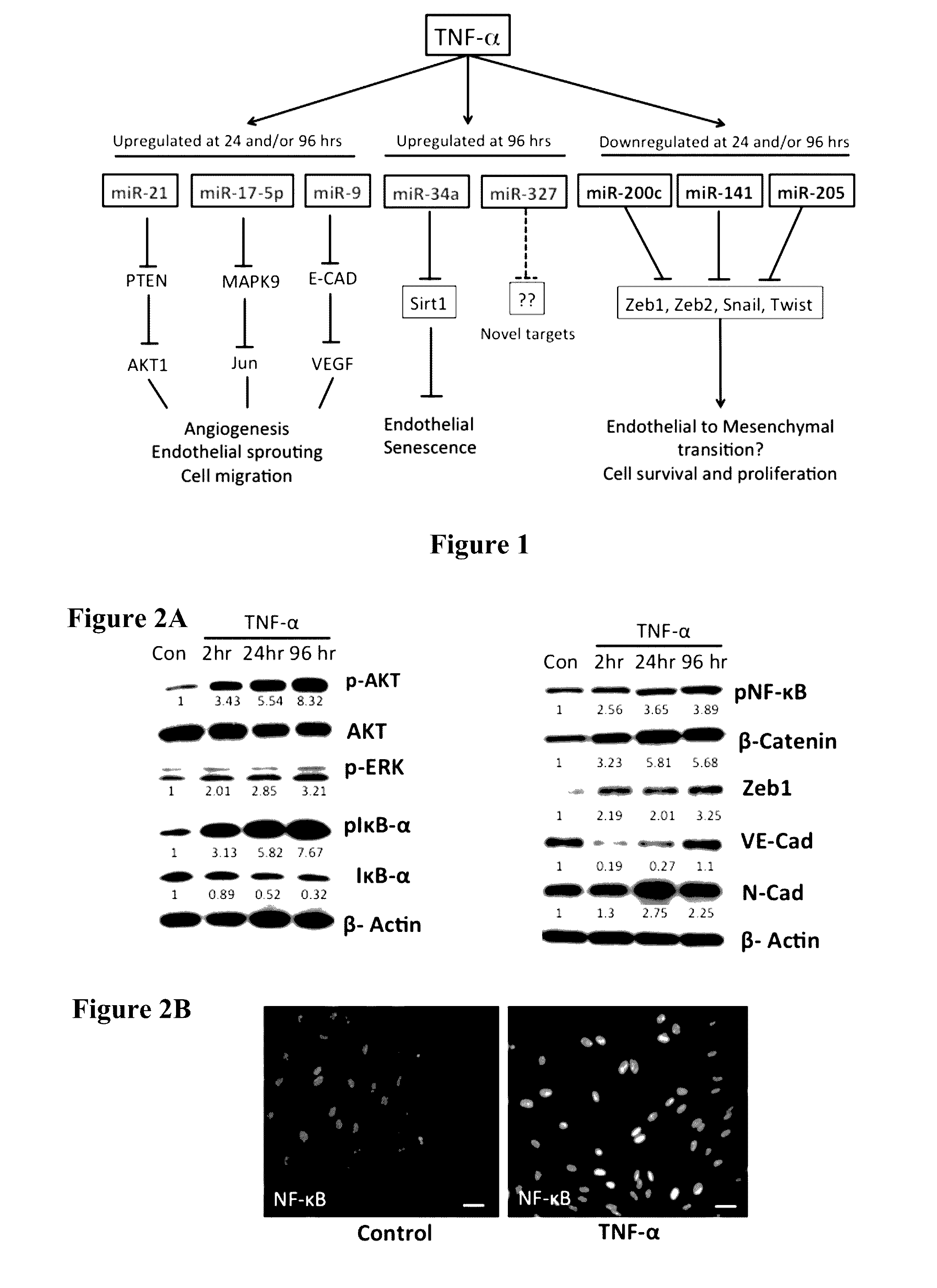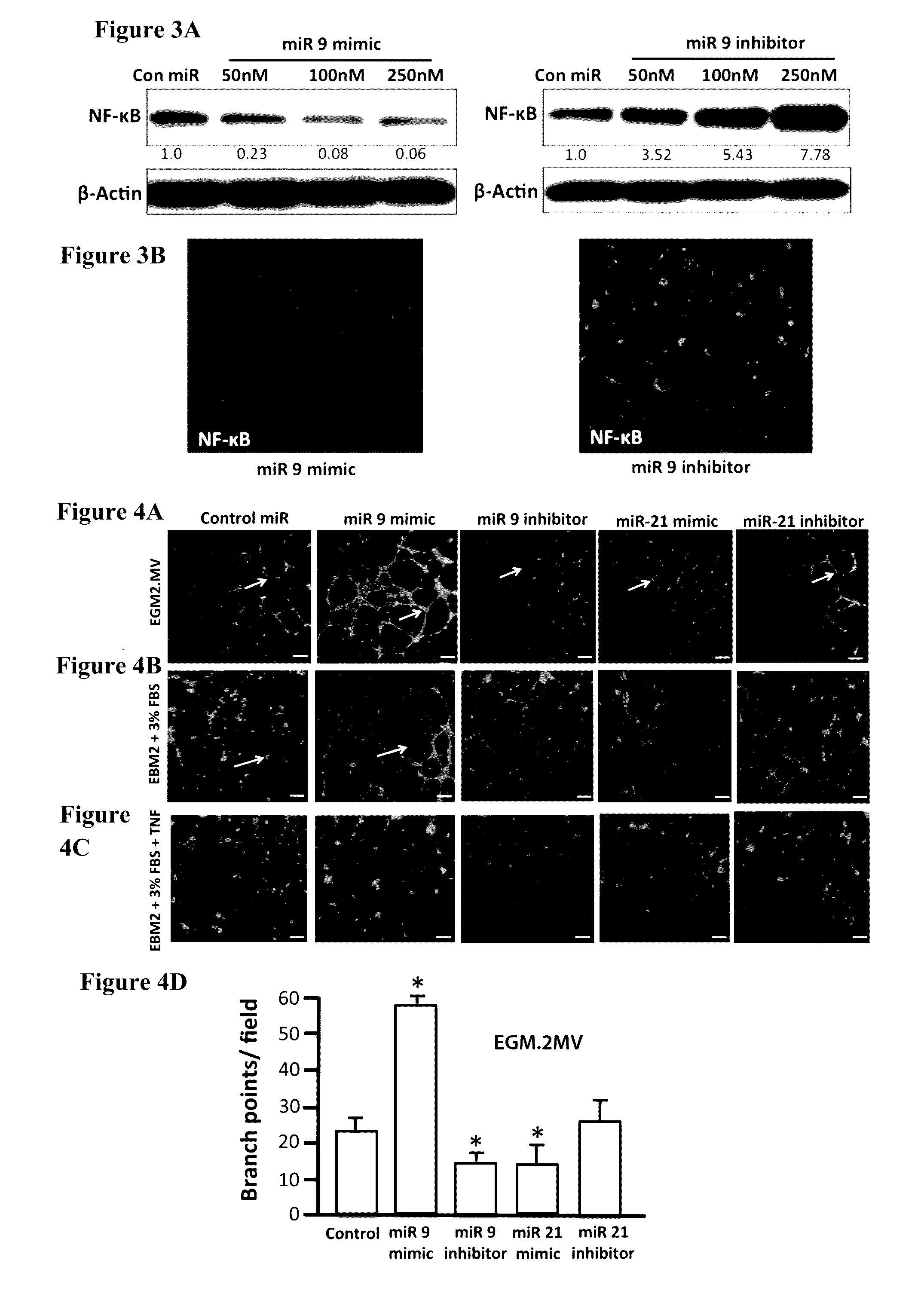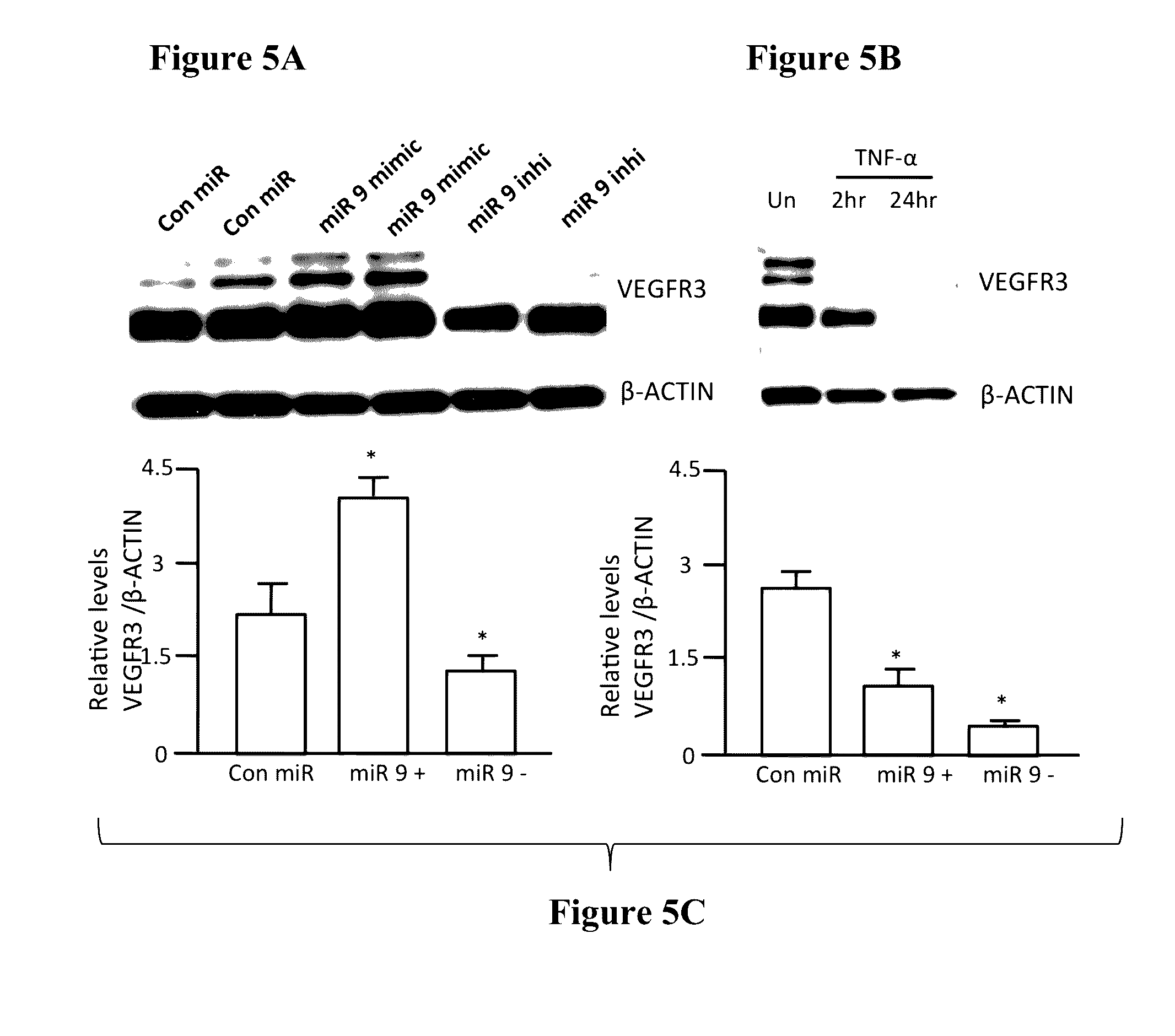Micro-rnas that modulate lymphangiogenesis and inflammatory pathways in lymphatic vessel cells
a lymphatic vessel and micro-rna technology, applied in microbiological testing/measurement, organic active ingredients, biochemistry apparatus and processes, etc., can solve the problem of unclear whether lymphangiogenesis is beneficial or detrimental to the resolution
- Summary
- Abstract
- Description
- Claims
- Application Information
AI Technical Summary
Benefits of technology
Problems solved by technology
Method used
Image
Examples
example 1
TNF-α Mediates Differential and Temporal Expression of miRNAs Associated with the Inflammatory Response in Lymphatic Endothelium
[0121]We analyzed the expression patterns of 88 different miRNAs in LECs after stimulation with TNF-α for 2 hr, 24 hr or 96 hr by using an Inflammatory and Autoimmune Response Real-Time-RT / PCR miRNA array. Upon quantification, out of 88 miRNAs, overall only 30 miRNAs showed a 1.8 fold difference or higher and / or had a significant p value (p<0.05) over the different time points analyzed (Table 2). Of these, only 1 miRNA was up regulated at 2 hrs of TNF-α treatment while 3 miRNAs were down regulated. At 24 hrs, the number of induced miRNA increased to 11, whereas 3 miRNAs were down regulated. Several miRNAs showed differential expression at 96 hr, which had a total of 12 up regulated and 7 down regulated miRNAs (Table 2). We found several overlapping miRNAs at each of the time points analyzed whereas a number of them were unique to a specific time point. Of t...
example 2
TNF-α Promotes an Inflammatory Pathway in the Lymphatics and Also Increases Expression of Molecular Markers Associated with EMT / EndMT
[0123]We evaluated the role of TNF-α in mediating inflammation in the LECs. As shown in FIG. 2, TNF-α increased the phosphorylated levels of IκB at 2 hr, which was accompanied by a corresponding decrease in the levels of total IκB. Phospho NF-κB is also increased in the TNF-α treated cells and immunofluorescence data show that there is a marked nuclear translocation of NF-κB in LECs. TNF-α also modulated the activation of p-AKT and p-ERK in a time-dependent manner with maximum activation at 96 hr post treatment (FIG. 2). In addition, TNF-α also increased expression of Zeb1, β-Catenin and N-Cad, while decreasing levels of VE-Cad. The levels of the housekeeping control β-actin showed no change in expression (FIG. 2).
example 3
While miR-9 Inhibits NF-κB Signaling in LECs, it Promotes Lymphatic Tube Formation and Lymphangiogenesis Pathway as Well as EndMT
[0124]Since NF-κB has been previously shown to be a target for miR-9 (Bazzoni et al., 2009) and miRNA target analysis databases also showed a conserved miR-9 3′ UTR binding seed sequence in the NF-κB gene, we checked the NF-κB protein levels in LECs transfected with increasing concentration of miR-9 mimic and miR-9 inhibitor. miR-9 overexpression significantly inhibited NF-κB in a concentration dependent manner, while inhibition of endogenous miR-9 increased the relative levels of NF-κB (FIG. 3).
[0125]Though several studies have shown the close association of inflammation and lymphangiogenesis (Ji 2007; Pober and Sessa 2007; Podgrabinska, Kamalu et al. 2009; Vigl, Aebischer et al. 2011), the role of the proinflammatory cytokine TNF-α in modulating lymphangiogenesis remains controversial (Polzer, Baeten et al. 2008; Baluk, Yao et al. 2009; Chaitanya, Franks...
PUM
| Property | Measurement | Unit |
|---|---|---|
| molecular weight | aaaaa | aaaaa |
| time | aaaaa | aaaaa |
| time | aaaaa | aaaaa |
Abstract
Description
Claims
Application Information
 Login to View More
Login to View More - R&D
- Intellectual Property
- Life Sciences
- Materials
- Tech Scout
- Unparalleled Data Quality
- Higher Quality Content
- 60% Fewer Hallucinations
Browse by: Latest US Patents, China's latest patents, Technical Efficacy Thesaurus, Application Domain, Technology Topic, Popular Technical Reports.
© 2025 PatSnap. All rights reserved.Legal|Privacy policy|Modern Slavery Act Transparency Statement|Sitemap|About US| Contact US: help@patsnap.com



